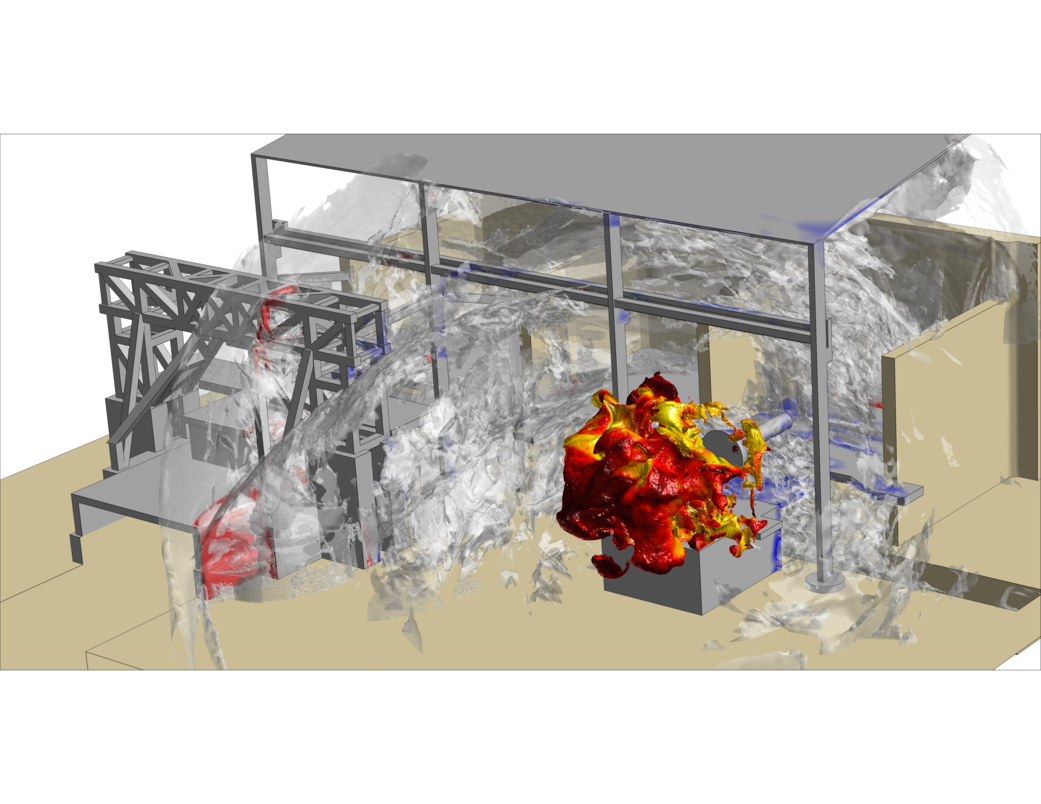Understanding the blast environments that could result from an explosion of rocket propellant is critical to maximizing the safety of space launch systems and infrastructures. Large-scale computational fluid dynamics (CFD) simulations are being used to predict these intense blasts and how they interact with surrounding structures.
This simulation shows the detonation of gaseous hydrogen and oxygen released within a rocket engine test facility. Isosurfaces of combustion products are colored red and yellow by temperature, and blast waves are visualized using a grey pressure gradient isosurface. Resulting surface pressures are also shown on the facility structures, with red for positive and blue for negative gauge pressure.
Such blast environment simulations must include complex finite-rate chemistry calculations while also resolving structural details over a large area, making them very computationally demanding. Each simulation for this project required approximately 2,000 processors on the Pleiades supercomputer at NASA’s Ames Research Center, and generated over 2 terabytes of data. Results have provided valuable insight into how blast waves propagate and interact with nearby structures.
Image Credit: Brandon Williams, NASA’s Marshall Space Flight Center
Related: NASA will showcase more than 30 of the agency’s exciting computational achievements at SC13, the international supercomputing conference, Nov. 17-22, 2013 in Denver.



























